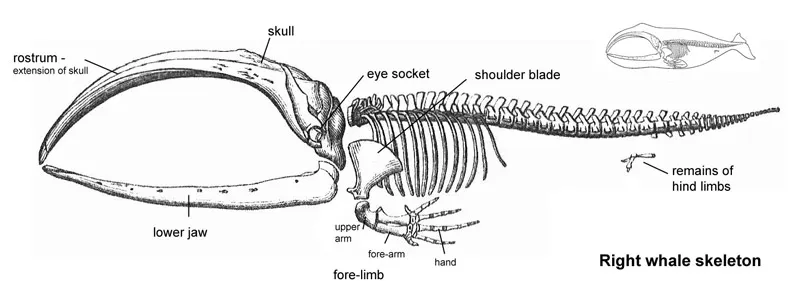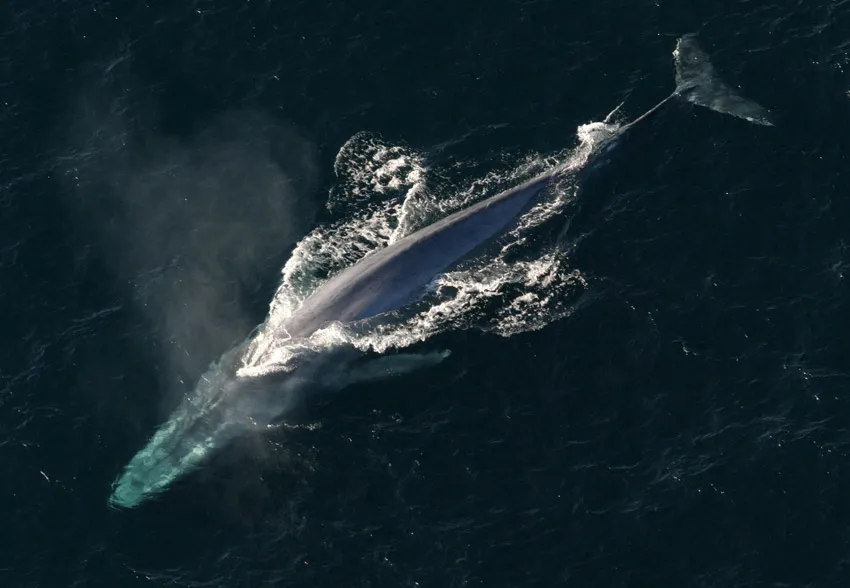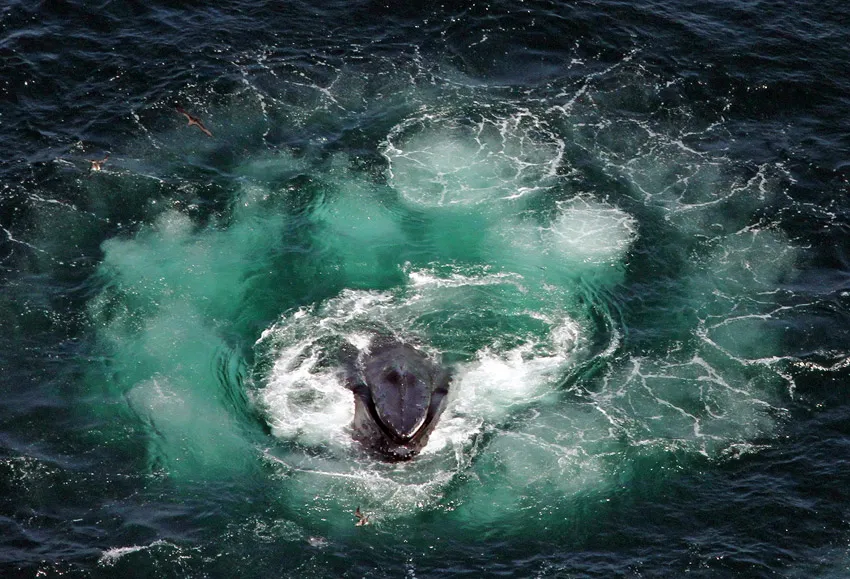Whales
Biology and Adaptations
Whales are amongst the most enigmatic and fascinating of all creatures. The Blue Whale is the largest animal ever to have lived on earth, at up to 100 tons, easily out-weighing the heaviest dinosaurs, even an "ordinary " sized whale is a vast and impressive creature.
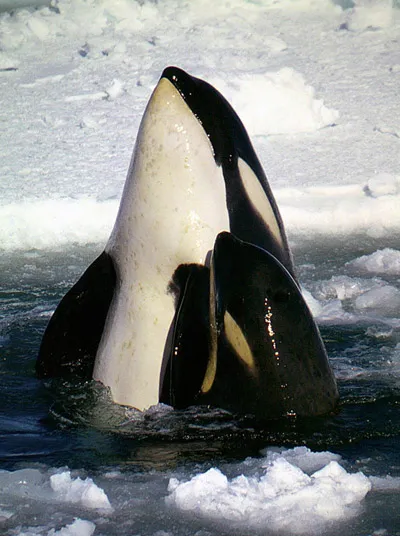 Whales are huge, but elusive and difficult
to see which adds to their mystery and fascination.
They are highly intelligent animals with an elaborate social
life, no possessions and the complete freedom of movement in
three dimensions. Is it any wonder that they are such popular
and fascinating animals? - maybe we just want to be like them.
Whales are huge, but elusive and difficult
to see which adds to their mystery and fascination.
They are highly intelligent animals with an elaborate social
life, no possessions and the complete freedom of movement in
three dimensions. Is it any wonder that they are such popular
and fascinating animals? - maybe we just want to be like them.
Whales belong to the group of mammals called Cetaceans, they are a part of this group along with dolphins and porpoises.
Whales are mammals as are humans, dogs, cats, elephants and anguantibos amongst others. This means that they are not fish. They breathe air and so must return to the surface at regular intervals to get a breath. They give birth to live young that stay with the mother for over a year and feed on milk produced by the mother.
Whales are warm blooded and have a skeleton similar to our own (though greatly modified) the fore limbs are their front flippers and have similar bones in them to our arms and hands. The hind-limbs are generally not present at all, though are represented in many species by a tiny pair of "free floating" bones (pelvic vestiges) - not attached to any others - towards the rear of the animal. In the males of some species these bones serve as an attachment for the muscles that control the penis (ooh err!)
The rear flippers of a whale are called the flukes, these have no bone in them at all, being made of tough fibrous material. It is the flukes that provide the propulsive power in all Cetaceans with the forelimbs controlling direction and being used for communicative and social functions.
All whales have muscle with a high level of Myoglobin. This is a red pigment similar to haemoglobin that stores oxygen in the muscles for use during deep dives. When the whale surfaces, the oxygen in the myoglobin is replaced, similar to the process that happens in our own muscles during a sprint.
Sperm whale myoglobin was the first ever protein to have its three dimensional structure described in 1957 by the technique of x-ray crystallography which led to the Nobel chemistry prize in 1962 shared by John Kendrew and Max perutz.
Whale adaptations
How are blue, right, fin, sei, humpback, fin whales, the large species found in Antarctica, adapted to survive in the cold oceans?
Whales are not exclusively Antarctic animals but often found in the frigid waters in both north and south polar regions.
Large whales are able to live indefinitely in the coldest seas on earth. If you were to fall into the Antarctic Ocean, you would have about 15 minutes before hypothermia set in, at this point you may pass out and drown, in any case you would be dependent on someone else to get you out of the sea, even if you were kept afloat with a life vest you would be dead in 60-90 minutes. Whales however can live at the same temperatures indefinitely if healthy and reasonably fed, they just don't get hypothermia - ever. The reason for this is that a large size with a low surface area to volume ratio, and a blanket of blubber around the whole animal below the skin mean that metabolic heat is retained to the degree that the coldest seas are readily survivable.
They have a number of adaptations that enable them to live and thrive in the Polar regions, these can be broken down into:
- Anatomical - Structures of the body.
- Behavioural - The manner in which animals move and act.
- Physiological - The internal functions of the animal from biochemical, to cellular, tissue, organ and whole organism levels.
Anatomical Adaptations

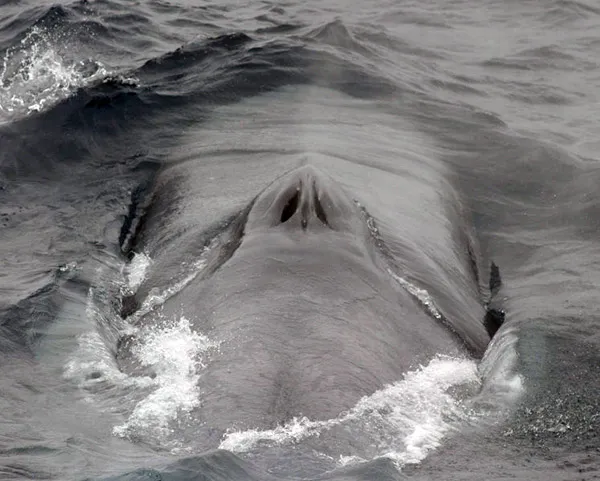
Lunge feeding may be a key development in allowing whales to reach their enormous size, so stretchy nerves could be a vital component in the evolution of large whales.
Behavioural Adaptations
Other whales may come in at this point too, as the prey flee one predator, they are more likely to blunder into the path of another, so co-operative feeding helps them all.
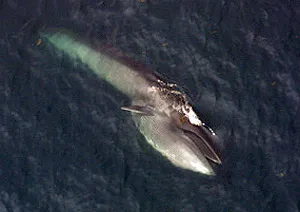
Physiological Adaptations
Toothed whales and Baleen whales
Cetaceans are split into two groups, depending on whether they have teeth or not.
Toothed whales - Odontoceti
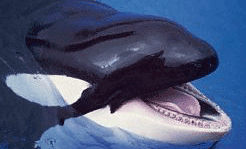 This
group includes Dolphins, Porpoises, Killer whales (Orcas) and
Sperm Whales. They have teeth in the usual manner, usually consisting
of lots of identical peg-like (but often very sharp!) teeth
to catch their slippery prey. Odontocetes are predators on fish
or other fast swimming and fairly large prey such as squid.
This
group includes Dolphins, Porpoises, Killer whales (Orcas) and
Sperm Whales. They have teeth in the usual manner, usually consisting
of lots of identical peg-like (but often very sharp!) teeth
to catch their slippery prey. Odontocetes are predators on fish
or other fast swimming and fairly large prey such as squid.
Toothed whales differ from baleen whales (and every other mammal) in that they only have one nostril instead of two. Orcas have teeth in both jaws like most Odontoceti, Sperm Whales are unusual in that they only have teeth in the lower jaw.
Baleen whales - Mysticeti
The members of this group don't have teeth as we know them, but baleen plates or "whalebone". The whole skull of such whales is highly modified. There is a large strong bony projection from the front of the "brain case" called the rostrum, from which baleen plates (made of keratin, like skin, fingernails, hair, hooves and rhino horns) hang on either side. This makes a triangular tent-like structure that is a large and elaborate sieve. The lower jaw is the "floor" of this tent and baleen whales have a huge tongue that sits in the middle of it all.
Mysticetes take in a mouth full of sea water and huge numbers of planktonic food such as krill or even shoaling fish They then close their mouths and use the tongue to push out all of the water through the baleen filters which keep the small prey inside, these are then swallowed. Different species of whales feed on different sizes of prey according to how wide the gaps in their baleen filters are. In this way, they don't all compete directly with each other and so are able to co-exist in the oceans occupying different "niches".
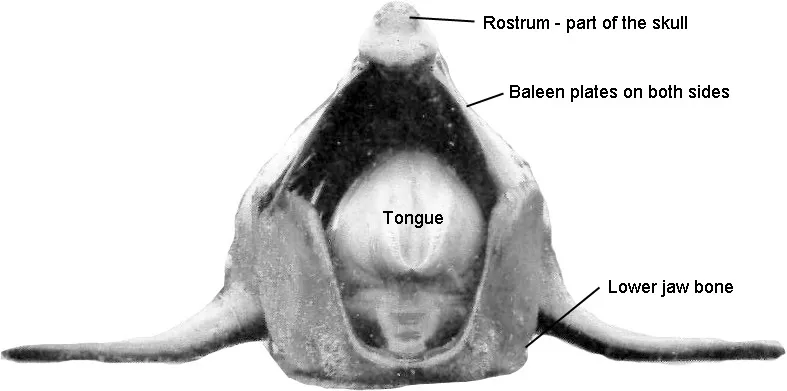
A Right Whale, a baleen whale, showing the baleen
in the mouth and the large tongue.
The baleen whales include all the really large whales apart from the Sperm Whale (which has teeth). Blue, Right, Sei, Fin, Grey, Humpback and Minke whales are all baleen whales.
Some whales are referred to as "Rorquals" These are members of a group of whales that are characterised by having numerous longitudinal grooves along the throat region, they also have short baleen plates, rarely more than 3 feet long and are the fastest swimming of the whales.
Taxonomy of whales
Taxonomy is the study of the relationships between organisms. It is a system of classifying them by observable structures that may be large, molecular or anywhere in between. Taxonomy groups organisms according to their similarities based on evolutionary relationships.
Whales are mammals of the order Cetacea:
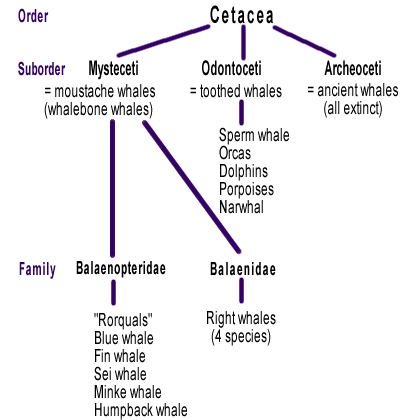
This is not a comprehensive summary of the taxonomy of all Cetaceans, but of those found commonly in Antarctica and covered in more detail on this site.

